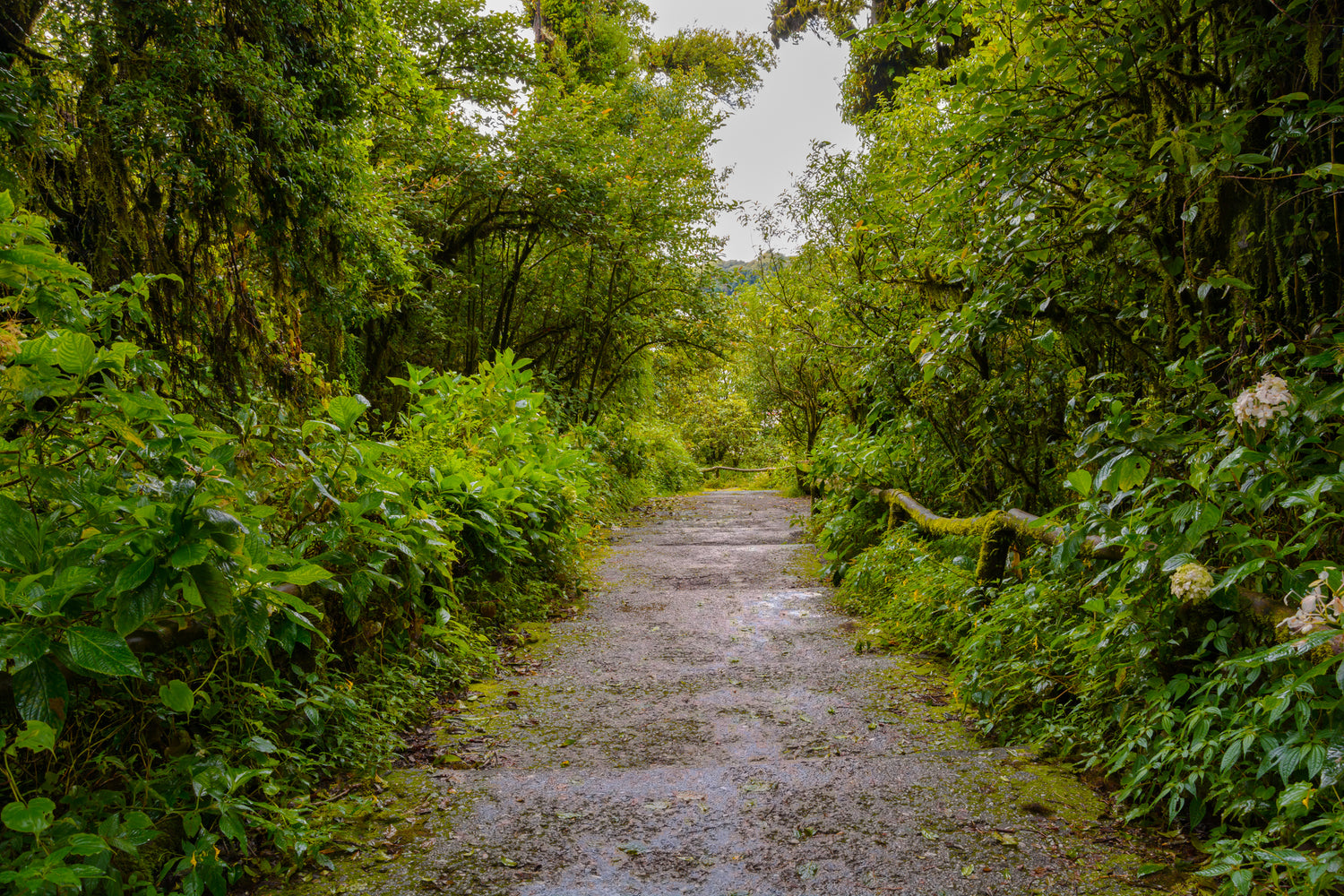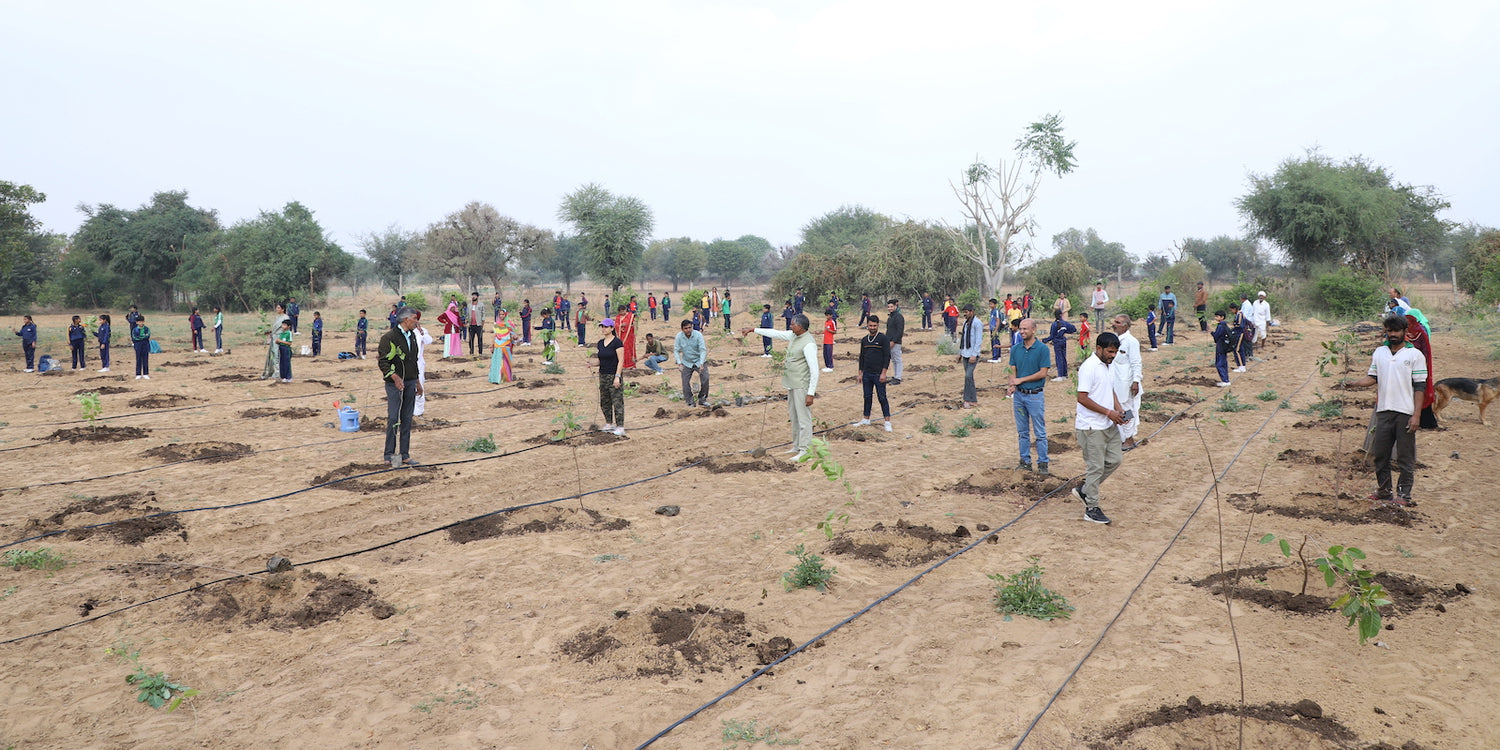Miyawaki Forest in Aurangabad
In the heart of Aurangabad, a green revolution is quietly taking root. The Miyawaki Forest, a testament to nature's resilience, is transforming barren Read more
Connect with us
-
👥 Corporates
If you are looking for:
- 🌲 Tree Plantation Events
- 📊 CSR Projects
📧 corporate@growbilliontrees.com
📞 +91 9699723523
💬 +91 9325931304 WhatsApp (Only)
🕒 Mon - Sat | 10am - 7pm IST
-
🧩 Tree Plantation NGOs
If you are looking for:
- 💰 Financial Assistance
- 🤝 Operational Support
📧 support@growbilliontrees.com
📞 +91 9699723523
💬 +91 9325931304 WhatsApp (Only)
🕒 Mon - Sat | 10am - 7pm IST
-
🌼 Individuals
If you are looking for:
- 👥 Group Tree Plantation Drive
- 🌳 Bulk Tree Plantation
📞 +91 9699723523
💬 +91 9325931304 WhatsApp (Only)
🕒 Mon - Sat | 10am - 7pm IST
Plantation Gallery
Trending
Trees for Corporates
Miyawaki Forest in Aurangabad
In the heart of Aurangabad, a green revolution is quietly taking root. The Miyawaki Forest, a testament to nature's resilience, is transforming barren landscapes into lush, thriving ecosystems. This initiative is not just about planting trees; it's about nurturing a sustainable future.
The Miyawaki method, pioneered by Japanese botanist Akira Miyawaki, is a unique approach to afforestation. It involves planting native species in dense clusters, mimicking natural forests. This method accelerates growth, with trees maturing in just 20-30 years, compared to the usual 200 years.
In Aurangabad, the Miyawaki Forest is more than just a green patch. It's a living, breathing example of ecological restoration. The project has garnered attention for its rapid results and the rich biodiversity it supports. Birds, insects, and small mammals have found a new home, creating a balanced ecosystem.
One of the driving forces behind this initiative is the collaboration between Grow Billion Trees, corporates, government bodies, and dedicated volunteers. This partnership is crucial in scaling up the project and ensuring its long-term success.
Grow Billion Trees, a non-profit organization, is at the forefront of this green movement. Their mission is to plant a billion trees worldwide, and the Miyawaki Forest in Aurangabad is a significant milestone in this journey. By partnering with corporates, they secure funding and resources necessary for large-scale plantations.
Corporates play a vital role in this initiative. By investing in green projects, they not only fulfill their corporate social responsibility but also contribute to a healthier planet. These partnerships are a win-win, benefiting both the environment and the companies involved.
The government, too, is a key player in this endeavor. By providing land and logistical support, they facilitate the smooth execution of tree plantation drives. Their involvement ensures that the project aligns with regional environmental goals and policies.
Volunteers are the heart and soul of the Miyawaki Forest project. Their passion and dedication bring the vision to life. From planting saplings to maintaining the forest, volunteers are involved in every step, making a tangible impact on the environment.
Regular tree plantation drives are organized to expand the forest and engage the community. These events are not just about planting trees; they are about fostering a connection with nature. Participants leave with a sense of accomplishment and a deeper understanding of environmental stewardship.
The impact of the Miyawaki Forest in Aurangabad is profound. It serves as a carbon sink, absorbing CO2 and improving air quality. The dense foliage also helps in reducing noise pollution and regulating temperature, creating a microclimate that benefits the surrounding area.
Moreover, the forest acts as a natural water reservoir. The dense root systems improve soil structure, enhancing water retention and reducing runoff. This is particularly beneficial in regions prone to drought, as it helps in groundwater recharge.
The biodiversity supported by the Miyawaki Forest is another significant advantage. Native plants attract a variety of wildlife, promoting ecological balance. This biodiversity is crucial for pollination, pest control, and maintaining the health of the ecosystem.
For the local community, the Miyawaki Forest is a source of pride and inspiration. It provides a green space for recreation and education, fostering a sense of ownership and responsibility towards the environment. Schools and colleges often organize field trips, using the forest as a living classroom.
The success of the Miyawaki Forest in Aurangabad is a beacon of hope for other regions. It demonstrates that with the right approach and collaboration, degraded lands can be transformed into vibrant ecosystems. This model can be replicated in urban and rural areas, contributing to global reforestation efforts.
As the world grapples with climate change and environmental degradation, initiatives like the Miyawaki Forest offer a glimmer of hope. They remind us that nature, when given a chance, can heal and thrive. It's a call to action for individuals, communities, and organizations to come together and make a difference.
In conclusion, the Miyawaki Forest in Aurangabad is more than just a collection of trees. It's a symbol of resilience, collaboration, and hope. By partnering with corporates, government, and volunteers, Grow Billion Trees is paving the way for a greener, more sustainable future.
Join this green revolution. Whether you're a corporate looking to invest in sustainability, a government body seeking to enhance regional ecology, or an individual passionate about the environment, there's a place for you in this journey. Together, we can plant the seeds of change and watch them grow into a billion trees.
Miyawaki Forest Benefits
Imagine a forest that grows faster than your favorite TV series releases new seasons. That's the Miyawaki Forest for you! In Aurangabad, these green patches are not just eye candy but also air purifiers, noise reducers, and biodiversity boosters. They’re like the Swiss Army knife of forests, offering multiple benefits in one compact package. So, if you’re tired of the concrete jungle, these mini-forests are your green escape plan, offering a breath of fresh air—literally!
Miyawaki Forest Method
Planting a Miyawaki Forest in Aurangabad is like hosting a tree party where everyone’s invited. With a mix of native species, these plantations are the ultimate biodiversity hotspots. Think of it as a botanical buffet where every plant gets its fill of nutrients, sunlight, and water. The result? A thriving ecosystem that’s as vibrant as a Holi festival. So, if you’re looking to add some green to your life, this plantation is your go-to.
Miyawaki Forest Success Stories
Aurangabad is buzzing with Miyawaki Forest success stories that are more inspiring than a motivational TED Talk. From barren lands to bustling ecosystems, these forests are the comeback kids of the plant world. They’ve transformed urban spaces into green havens, proving that nature always finds a way. So, if you’re in need of a feel-good story, look no further than these thriving patches of greenery.
Miyawaki Forest Challenges
In Aurangabad, Miyawaki Forests are bringing communities together faster than a neighborhood potluck. These green projects are the ultimate team-building exercise, where everyone from school kids to senior citizens can get their hands dirty. It’s like a community garden on steroids, fostering a sense of ownership and pride. So, if you’re looking to bond with your neighbors, planting a Miyawaki Forest might just be the perfect icebreaker.
Miyawaki Forest Environmental Impact
The environmental impact of Miyawaki Forests in Aurangabad is like a plot twist in a thriller novel—unexpected and game-changing. These forests are carbon sinks, biodiversity hotspots, and climate change warriors all rolled into one. They’re the unsung heroes of the environment, quietly working their magic while we go about our daily lives. So, next time you’re stuck in traffic, take a moment to appreciate these green warriors fighting the good fight.
Miyawaki Forest Future Prospects
The future of Miyawaki Forests in Aurangabad is as bright as a summer day. With increasing awareness and community involvement, these forests are set to become the new norm in urban planning. They’re like the trendsetters of the plant world, paving the way for a greener, more sustainable future. So, if you’re wondering what the future holds, just look to these thriving forests for a glimpse of what’s to come.
You may like
Corporate Plantations
FAQ
What is a Miyawaki Forest and how does it work?
A Miyawaki Forest is a dense, native forest created using the Miyawaki method, developed by Japanese botanist Akira Miyawaki. This method involves planting a variety of native species close together, which encourages rapid growth and biodiversity. The dense planting mimics natural forests, allowing plants to support each other and thrive. At Grow Billion Trees, we believe in letting nature do the heavy lifting while we take the credit for being eco-geniuses.
Why is the Miyawaki method suitable for Aurangabad?
Aurangabad's climate and soil conditions make it an ideal candidate for the Miyawaki method. The region's semi-arid climate benefits from the dense planting, which helps retain moisture and improve soil quality. Plus, the method's focus on native species ensures that the plants are well-adapted to local conditions. At Grow Billion Trees, we like to think of it as giving Mother Nature a little nudge in the right direction.
How long does it take for a Miyawaki Forest to grow?
Miyawaki Forests offer numerous benefits, including increased biodiversity, improved air quality, and enhanced soil health. They also provide habitat for local wildlife and help combat climate change by sequestering carbon. At Grow Billion Trees, we think of it as nature's version of a multi-tool—versatile, efficient, and always handy.
How much space is needed to create a Miyawaki Forest in Aurangabad?
The beauty of the Miyawaki method is its adaptability. You can create a Miyawaki Forest in as little as 100 square meters, making it perfect for urban areas or small plots of land. At Grow Billion Trees, we believe that size doesn't matter—it's what you do with it that counts.
What types of plants are used in a Miyawaki Forest?
A Miyawaki Forest uses a mix of native species, including trees, shrubs, and ground cover plants. The diversity ensures a resilient ecosystem that supports various wildlife. At Grow Billion Trees, we like to think of it as a botanical potluck—everyone brings something to the table, and the result is a feast for the senses.
How can I get involved in creating a Miyawaki Forest in Aurangabad?
Getting involved is easy! You can join community planting events, sponsor a plot, or even start your own Miyawaki Forest with guidance from experts like us at Grow Billion Trees. We promise it's more fun than a weekend Netflix binge and way better for the planet.
What challenges might arise when creating a Miyawaki Forest?
Challenges can include selecting the right mix of native species, ensuring proper soil preparation, and maintaining the forest in its early stages. But don't worry, at Grow Billion Trees, we've got the expertise to tackle these challenges head-on. Think of us as your eco-friendly fairy godparents, waving our magic wand to create lush, green forests.























